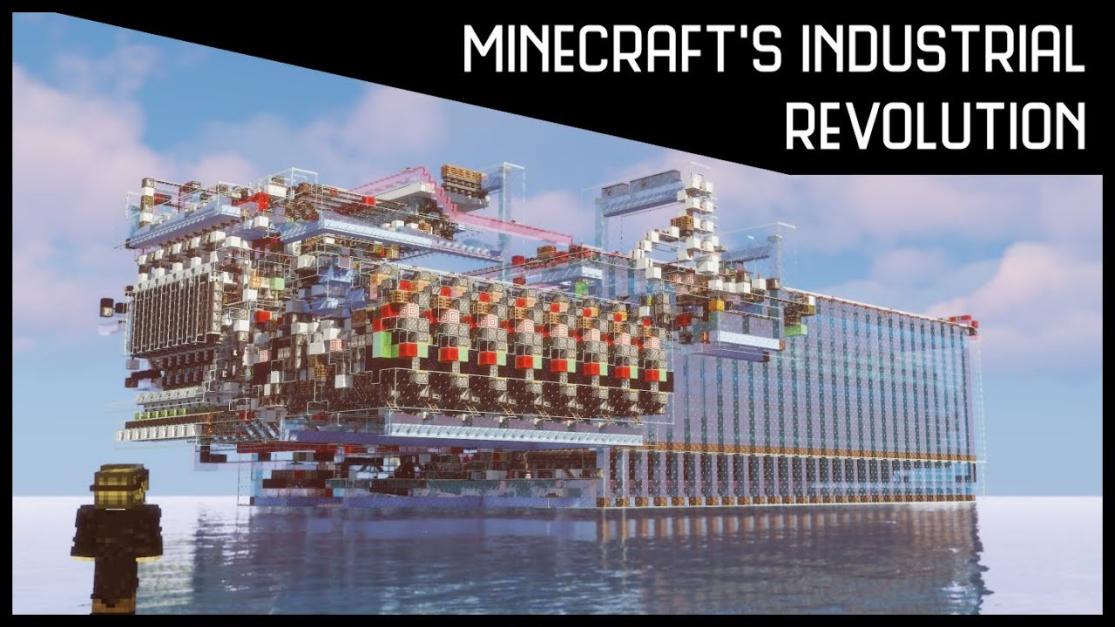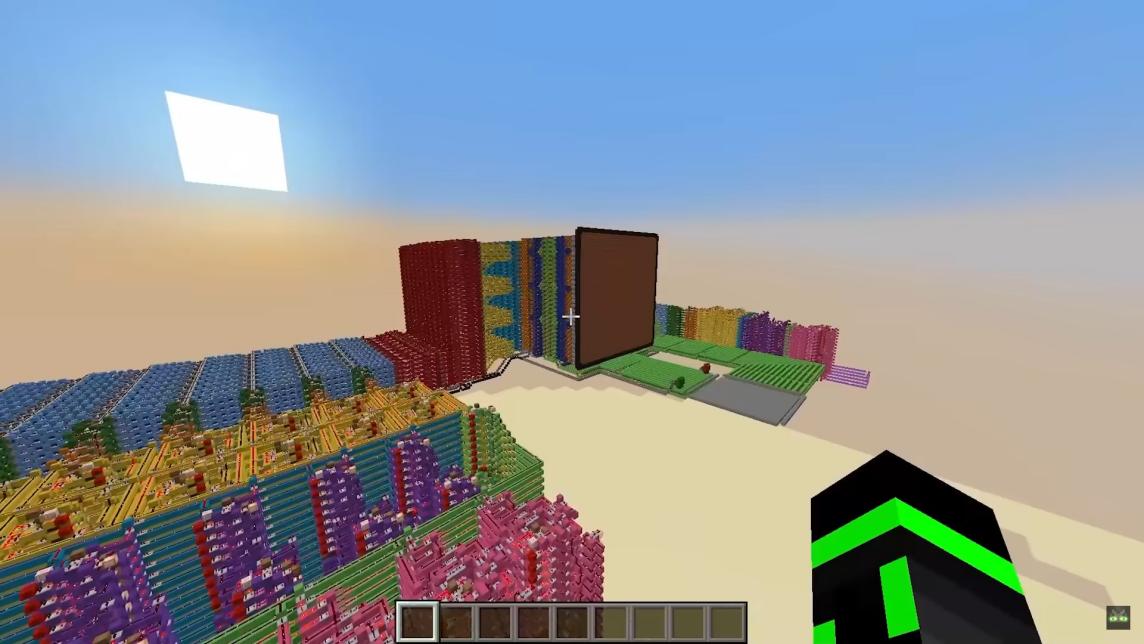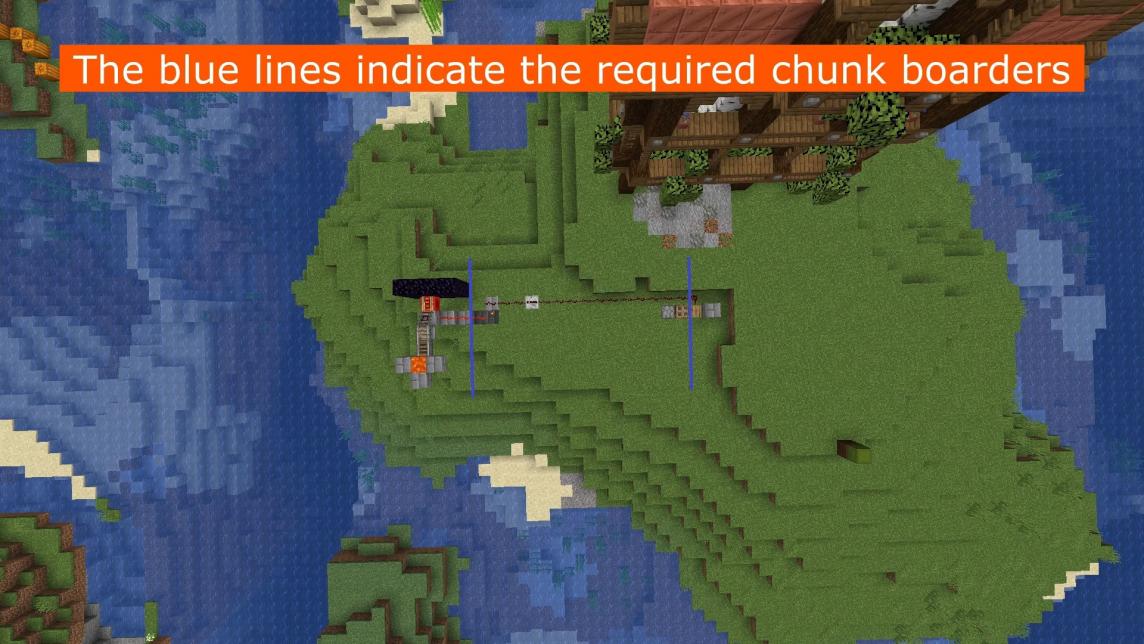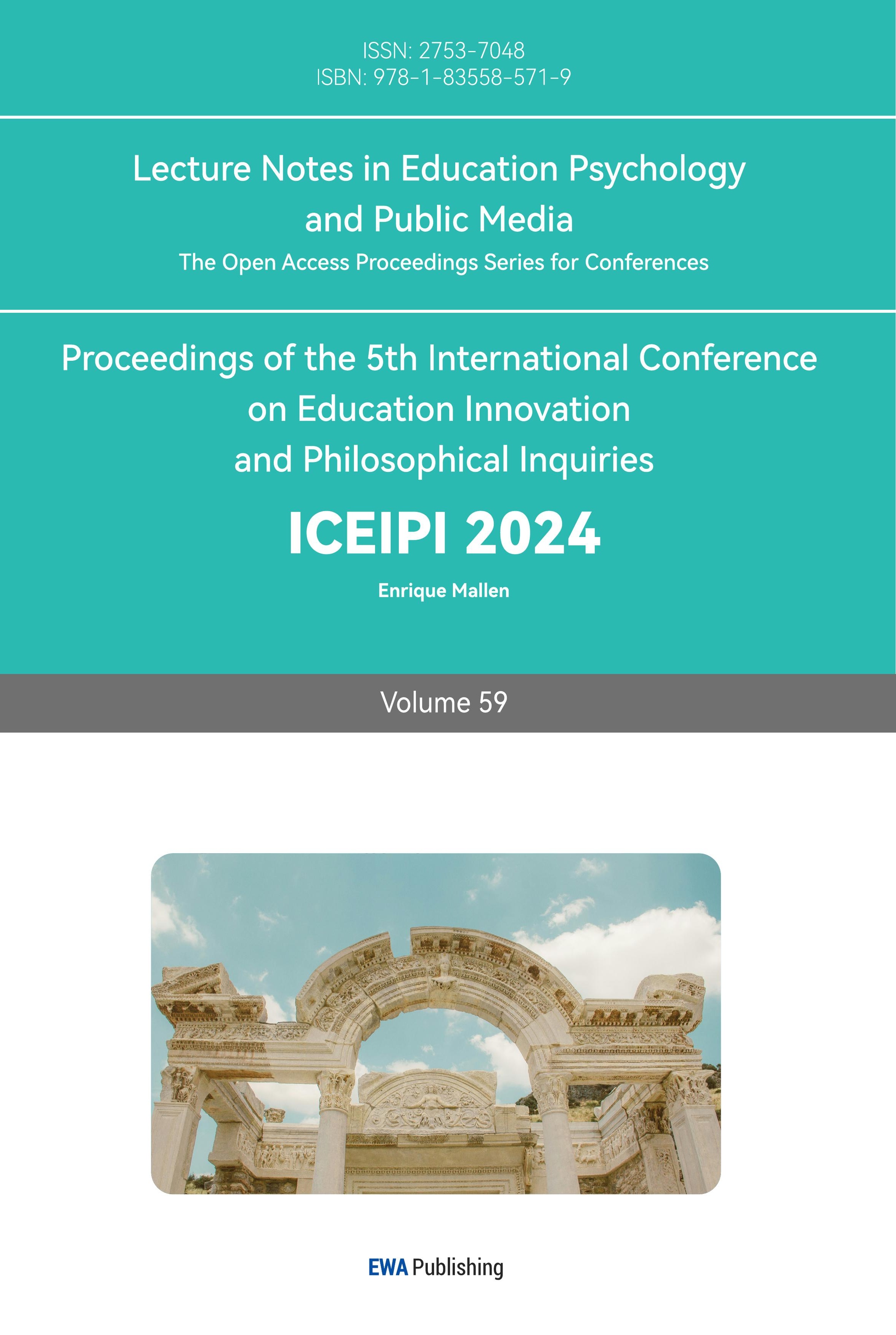1. Introduction
Sandbox games, as we know, try to give players as much freedom of creation as possible, which sparks creativity, whether considered good or bad: a player in The Sims could wait for an NPC to enter the bathroom then delete all the doors to trap him or her inside forever. This feature is likely caused by the games’ nature: players have to discover the mechanism by engaging in exploratory play, inadvertently learning about manipulating the game system, thus encouraging creativity [1]. Minecraft, as one of the sandbox games, features diverse mechanisms, infinite world generation, and freedom of creation. It has been ranked as the second best-selling game of all time only below Tetris with more than 300 million sales and have a large amount of relevant content on the Internet created throughout the years it exists [2]. In recent years, the game is become increasingly popular among educators because of its freedom of allowing players to create structures and experiment with things safely in the magic circle of the game. It has been used as an ecology learning tool, scientific learning tool, cultural and social learning tool. The collaborative learning environment allows players to know how collaboration works as well as create video walkthroughs and commentaries to practice expressing skills [3-4]. The four main features of Minecraft are: 1. Building(the game has diverse color, shape, and usage of items, which can be composed together to create a magnificent building), 2. Mining(mining underground rewards players experience points, valuable items that can be heat and crafted into useful tools), 3.Crafting(converting raw materials to tools and other items), 4. Redstone. Redstone, in particular, is a mechanism with nearly identical logic with real engineering(such as basic gate logic that is implemented in circuitry: or, xor, nor circuit) [5]). There is no doubt that gamification is an important and powerful weapon in the arsenal for learning, marketing and behaviour change of any kind [5]. However, A number of researchers focus more on the genre of sandbox as a whole or the game’s general advantages in education and only mention redstone along with other mechanisms [5-6] or focus on sometimes even downsides of it [7], which may have potentially ignored the significance of the component.
The paper wants to find out in detail what skills in STEM and the common values required for real STEM majors can be discovered by advanced players of the game by analyzing videos of different types of Minecraft Redstone builds on YouTube with the help of AI. In this way, we can have a glance at how Minecraft may help practice players’ relevant values to prosper in the field of engineering. The result can also further our understanding of the particular mechanism and introduce new means of developing children’s interests in the subject.
2. Method
2.1. Gather Videos
First, with a new YouTube account, the author searched the term “Minecraft Redstone” and chose a video with a seemingly complex redstone build and recorded its link and name. Then, the author identified 2 videos in total featured on the homepage and classified them into two categories: Vanilla Redstone(players use basic logic in the field of computer engineering to design redstone contraptions to achieve complex outcomes without resorting to game exploits) and Exploit Redstone(apart from Vanilla Redstone, machines fall into this category usually use one or more game exploits to achieve an interesting outcome.). Third, for each category, the author searched the corresponding term in Google for discussions on online forums like Reddit to learn the mechanism behind the scenes and other similar content creators before finding relevant content on YouTube. Fourth, the author then records all 5 videos(3 representing the first category and 2 for the second category)including The New Universal Smart Crafter is Finally Here [8], I Made A Rubik’s Cube In Vanilla Minecraft [9], I Made a Neural Network with just Redstone! [10], Magic reveal: Item Shadowing [11], The second video analyzed is Flexible home teleportation with a fishing rod 1.16-1.20.x [12]. for further analysis.
2.2. Analysis
For each video, the author first watched the whole video to learn the general idea, then started over to note key points and interesting concepts(Eg. Points potentially corresponding to real engineering such as how the creator explained the concept of transformer in engineering or a furnace array that distributes items evenly). Second, the author read 3 pages of comments and searched titles of the videos on Reddit to verify the legitimacy through people’s opinions and also have a deeper understanding. Third, the author asked ChatGPT 4.0o to generate similar real engineering terms and concepts with points in videos and searched for basics in the corresponding field for comparison. Lastly, the researcher summarized the qualities the creator showed in the process and compared them with the qualities of an effective engineer [13].
3. Results
3.1. Vanilla Redstone
3.1.1. The Universal Smart Crafter
It features a machine able to take multiple types of items multiple times as input and convert them into a single type of items as the output. In general, the machine is similar to Assembly Lines which has the same logic of transforming inputs to outputs. The smart crafter was designed based on a previous build called Furnace Array, a layout of furnaces and network of minecarts that precisely distribute input and collect output. The creator also used a normalization circuit to control the delay of releasing individual minecarts, used dummy items to fill specific number and locations of minecart slots. Furthermore, the concept of creating a separate world to test specific part of the machine and a cleaning system in case of wrong input have been incorporated. Similar concepts are prevalent in engineering, specifically: manufacturing machines and automated material handling system, and filler material in the field of manufacturing engineering; parallel computing, load balancing, unit testing, placeholder values, normalization, fault tolerance in computer engineering. In the process, the person meets several qualities of an effective engineer, including inquisitive(Incorporating others’ works), practical experience(He has done a number of similar projects), resourceful(Using helpful game modifications to speed up the construction time by copying parts, recording item numbers, and more), initiative(Initiate the project on his own), creativity(come up with new ideas to solve a problem), ambitiousness and enjoys challenges(The project is beyond hard), and sense of humour(Joke about what goes wrong) [13].

Figure 1: An image of the Universal Smart Crafter
3.1.2. Rubik’s Cube
The machine is a replication of a Rubik’s Cube. The creator designed it to have multiple parts including: a control room, move queue(anti-spam), random scramble generator, hex bussing and serial decoders, map display, and more. The concept of specialization is popular in all fields of engineering. In detail, the control room in the project is similar to Network Operation Centers in IT; the move queue is like a queuing system in computing and network engineering; Hex Bussing and Serial Decoders is a concept used extensively in computer engineering for communication; Map Display is Human-Machine Interface like a monitor. Within the video, the player shows qualities of practical experience(Also have done many projects), inquisitiveness and respect for others’ opinions(Learned the idea of using a map display instead of a direct display from his friend), and easily able to separate feelings from ideas and handles pressure well(Start the project over 1 month before the deadline after first failing it), initiative(Start making the machine because of his interests), decisiveness(didn’t give up because of the failure), creativity(Switch to another method of building the machine), ambitiousness and enjoys challenge(This is another hard project).

Figure 2: Image of the control interface
3.1.3. Neural Network
mattbatwings came up with the idea of constructing a machine in Minecraft that can recognize the number(0-9) drawn on the screen and display the possibility of the drawing being each number. He first chose between two neural networks and used Python’s Keras library to train the model. Afterward, in order to transfer the biases and weights to Minecraft, he multiplied them by 100 to make them integers. Then, he implemented the display and a contraption to detect the player’s movement and then draw the trail on screen from his previous builds [14]. In the process of adding weights and biases, he utilized a Python package called mcschematic to automate the work. Finally, a function was adopted and turned into Redstone builds to display each possibility. This project is deeply connected to the field of neural networks and math. The creator was recognized to have the following qualities: practical experience(his first Redstone video was uploaded 4 years ago [15], inquisitive(finding math formulas to solve his problems), resourceful(knowing relatively unpopular packages for use), initiative(The first time he had this idea was during a class about the topic in his university), creative(decided to implement bar chart to display all possibilities instead of only the highest one), enjoys challenge(He wanted to have faster and more accurate machine than another machine built by a team).

Figure 3: Part of the network
3.2. Exploit Redstone
3.2.1. Item Shadowing
It utilized an exploit called update suppression: using a large amount of powered rail in the game to force the game to process too much data in a single game tick, causing a stack overflow to prevent any update at the same tick. The creator’s build used this mechanism to stop the game from processing the update of item swapping from his hand to the inventory of a chest, thus creating a copy pointing to the same data as the original one in his hand. By using several methods of disconnecting the two, he successfully duplicated the item. Learning the mechanics and building this machine requires a deep understanding of software engineering. It shows the following qualities of the players: creativity(finding out the exploit and taking advantage of it) and enthusiasm (spending time researching the exploit).

Figure 4: The Update Suppressor
3.2.2. Remote Control Stasis Chamber
It features a remotely controllable teleportation contraption. The creator used a basic ender pearl stasis chamber that can keep the ender pearl(a throwable item in the game that can teleport the player to the location it lands) static while floating, thus preventing the pearl from hitting the ground and teleporting the player. Then, the creator connected it to a chunk loader(another machine that keeps making a minecart pass the nether portal and teleports the minecart back and forth to make the current chunk always active). Finally, the machine used an exploit: when the player throws the hook of a fishing rod on his or her left hand and goes through the nether portal to another dimension, they are disconnected, leading the machine still hold the pearl until the player uses the fishing rod again in the overworld. It involves a deep understanding of the game(potentially reverse engineering) as well as the ability to convert flaws of the game intoredstone build. Throughout the process, the creator shows creativity(using the fishing rot exploit for the machine).

Figure 5: The overworld part of the machine
4. Conclusion
In this paper, the author tries to find the connection between engineering and Minecraft Redstone. The author gathered content created by advanced Minecraft Redstone players and examined their builds with the help of AI. During the analysis process, several common qualities have been found for engineers and Minecraft redstones including(ranking by frequency of appearance): creativity(5), inquisitive(3), practical experience(3), initiative(3), enjoying challenge(3), resourceful(2), ambitiousness(2), sense of humor (1), respect for others’ opinions(1), easily able to separate feelings from ideas(1), handles pressure well(1), decisiveness(1), enthusiastic(1). Many engineering fields have also been found to have connections with Redstone, including Industrial Engineering, Computer Engineering, and Network Engineering. Thus, the author concludes that the Minecraft redstone mechanism is deeply concluded to real-world engineering disciplines. Players good at Redstone usually share a lot of qualities and knowledge with those who prosper in engineering. Educators can utilize the features of the game to help increase students’devotion and interest to the field of engineering and potentially practice values and skills in it. Limitations of the paper are: 1. only a limited number of content has been analyzed in this paper, broader research is recommended. 2. there are other technical aspects of the game that may help players develop their engineering skills.(Eg. seed hunters who analyze the game’s world generation algorithm to find the world seed by just an image, or anarchy server players who use their skills to create cheat programs(count as legit in anarchy server) or find exploits to discover others’ bases or create impressive works, command players who specialize on writing commands in the game to make cool effects and functions, mod creators who moderate some of the game’s mechanisms to make it more attractive, and more) Future researches can focus on other types of players such as those mentioned above. Researchers can also try to find connections between an educational field(not limited to engineering) with another game(not limited to Minecraft). For connections between engineering and Minecraft, future researchers can conduct deeper analysis by means of interviewing, surveying, and more.
References
[1]. Tornqvist, D. (2014). Exploratory play in simulation sandbox games: A review of what we know about why players act crazy. International Journal of Game-Based Learning (IJGBL), 4 (2), 78–95.
[2]. Eddie Makuch. (2024). Top 10 Best-Selling Video Games Of All Time. GameSpot. https://www.gamespot.com/gallery/top-10-best-selling-video-games-of-all- time/2900-4814/#11
[3]. Stenros, J. (2014). In defence of a magic circle: The social, mental and cultural boundaries of play. Transactions of the digital games research association, 1 (2).
[4]. Niemeyer, D. J., & Gerber, H. R. (2015). Maker culture and minecraft: Implications for the future of learning. Educational Media International, 52 (3), 216–226.
[5]. Callaghan, N. (2016). Investigating the role of minecraft in educational learning environments. Educational Media International, 53 (4), 244–260.
[6]. Ekaputra, G., Lim, C., & Eng, K. I. (2013). Minecraft: A game as an education and scientific learning tool. ISICO 2013, 2013.
[7]. Nebel, S., Schneider, S., & Rey, G. D. (2016). Mining learning and crafting scientific experiments: A literature review on the use of minecraft in education and research. Journal of Educational Technology & Society, 19 (2), 355–366.
[8]. cubicmetre. (2024, May). The new universal smart crafter is finally here [YouTube. Retrieved from https://www.youtube.com/watch?v=Ec0o1ncm_fM [Video]].
[9]. Purplers. (2024, May). I made a rubik’s cube in vanilla minecraft [YouTube. Retrieved from https://www.youtube.com/watch?v=26eNvXlwSx8 [Video]].
[10]. mattbatwings. (2024a, May). I made a neural network with just redstone! [YouTube. Retrieved from https://www.youtube.com/watch?v=DQ0lCm0J3PM [Video]].
[11]. Fallen Breath, P. (2021, October). Magic reveal: Item shadowing [YouTube. Retrieved from https://www.youtube.com/watch?v=mTeYwq7HaEA [Video]].
[12]. Borbarad13. (2022, March). Flexible home teleportation with a fishing rod 1.16-1.20.x [YouTube. Retrieved from https://www.youtube.com/watch?v=JoZEPcC8t9o [Video]].
[13]. Newport, C., & Elms, D. (1997). Effective engineers. International Journal of Engineering Education, 13 (5), 325–332.
[14]. mattbatwings. (2024b, April). We built microsoft paint in minecraft (again) [YouTube. Retrieved from https://www.youtube.com/watch?v=IgwD73tcAP4 [Video]].
[15]. mattbatwings. (2020, April). The redstone Redstone potential | a minecraft calculator [YouTube. Retrieved from https://www.youtube.com/watch?v=uGug-4xkw6M [Video]].
Cite this article
Liu,Q. (2024). Minecraft Redstone: The Gateway to Engineering. Lecture Notes in Education Psychology and Public Media,59,95-100.
Data availability
The datasets used and/or analyzed during the current study will be available from the authors upon reasonable request.
Disclaimer/Publisher's Note
The statements, opinions and data contained in all publications are solely those of the individual author(s) and contributor(s) and not of EWA Publishing and/or the editor(s). EWA Publishing and/or the editor(s) disclaim responsibility for any injury to people or property resulting from any ideas, methods, instructions or products referred to in the content.
About volume
Volume title: Proceedings of the 5th International Conference on Education Innovation and Philosophical Inquiries
© 2024 by the author(s). Licensee EWA Publishing, Oxford, UK. This article is an open access article distributed under the terms and
conditions of the Creative Commons Attribution (CC BY) license. Authors who
publish this series agree to the following terms:
1. Authors retain copyright and grant the series right of first publication with the work simultaneously licensed under a Creative Commons
Attribution License that allows others to share the work with an acknowledgment of the work's authorship and initial publication in this
series.
2. Authors are able to enter into separate, additional contractual arrangements for the non-exclusive distribution of the series's published
version of the work (e.g., post it to an institutional repository or publish it in a book), with an acknowledgment of its initial
publication in this series.
3. Authors are permitted and encouraged to post their work online (e.g., in institutional repositories or on their website) prior to and
during the submission process, as it can lead to productive exchanges, as well as earlier and greater citation of published work (See
Open access policy for details).
References
[1]. Tornqvist, D. (2014). Exploratory play in simulation sandbox games: A review of what we know about why players act crazy. International Journal of Game-Based Learning (IJGBL), 4 (2), 78–95.
[2]. Eddie Makuch. (2024). Top 10 Best-Selling Video Games Of All Time. GameSpot. https://www.gamespot.com/gallery/top-10-best-selling-video-games-of-all- time/2900-4814/#11
[3]. Stenros, J. (2014). In defence of a magic circle: The social, mental and cultural boundaries of play. Transactions of the digital games research association, 1 (2).
[4]. Niemeyer, D. J., & Gerber, H. R. (2015). Maker culture and minecraft: Implications for the future of learning. Educational Media International, 52 (3), 216–226.
[5]. Callaghan, N. (2016). Investigating the role of minecraft in educational learning environments. Educational Media International, 53 (4), 244–260.
[6]. Ekaputra, G., Lim, C., & Eng, K. I. (2013). Minecraft: A game as an education and scientific learning tool. ISICO 2013, 2013.
[7]. Nebel, S., Schneider, S., & Rey, G. D. (2016). Mining learning and crafting scientific experiments: A literature review on the use of minecraft in education and research. Journal of Educational Technology & Society, 19 (2), 355–366.
[8]. cubicmetre. (2024, May). The new universal smart crafter is finally here [YouTube. Retrieved from https://www.youtube.com/watch?v=Ec0o1ncm_fM [Video]].
[9]. Purplers. (2024, May). I made a rubik’s cube in vanilla minecraft [YouTube. Retrieved from https://www.youtube.com/watch?v=26eNvXlwSx8 [Video]].
[10]. mattbatwings. (2024a, May). I made a neural network with just redstone! [YouTube. Retrieved from https://www.youtube.com/watch?v=DQ0lCm0J3PM [Video]].
[11]. Fallen Breath, P. (2021, October). Magic reveal: Item shadowing [YouTube. Retrieved from https://www.youtube.com/watch?v=mTeYwq7HaEA [Video]].
[12]. Borbarad13. (2022, March). Flexible home teleportation with a fishing rod 1.16-1.20.x [YouTube. Retrieved from https://www.youtube.com/watch?v=JoZEPcC8t9o [Video]].
[13]. Newport, C., & Elms, D. (1997). Effective engineers. International Journal of Engineering Education, 13 (5), 325–332.
[14]. mattbatwings. (2024b, April). We built microsoft paint in minecraft (again) [YouTube. Retrieved from https://www.youtube.com/watch?v=IgwD73tcAP4 [Video]].
[15]. mattbatwings. (2020, April). The redstone Redstone potential | a minecraft calculator [YouTube. Retrieved from https://www.youtube.com/watch?v=uGug-4xkw6M [Video]].









